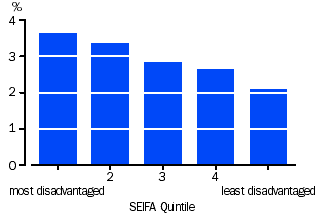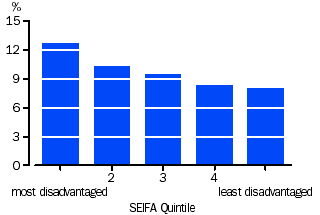IS LIFE GETTING BETTER?
Measures of Australia's Progress (cat. no. 1370.0) is an ABS contribution to the national discussion about whether life in Australia is getting better. It includes a number of indicators that measure change within different aspects of life in Australia, allowing readers to form their own views of how our country is progressing.
The ABS measures aspects of Australia's progress through the multitude of statistics the ABS publishes relating to Australia's economy, society and environment. However, these traditional publications tend to focus on a particular subject in isolation. Measures of Australia's Progress draws on a range of ABS and other data that cut across traditional subject matter boundaries to assess Australia's social, economic and environmental progress.
The publication is built around a series of headline indicators that provide a national summary of important areas of progress, and is presented in a style that is easily accessible to all Australians. Life expectancy at birth is used as a headline indicator of health, while progress in the human environment is measured by the number of days where air pollution in selected state capitals exceeded national environmental standards. Supplementary commentary provides more information about each of the areas of progress and the headline indicators.
Each aspect of progress is related, either directly or indirectly, to most of the others. Changes in one aspect of progress will be associated with complex interactions with other aspects - sometimes for the better and sometimes for the worse.
Measures of Australia's Progress includes three special articles that relate to, rather than measure progress. One such article provides information on the patterns and incidence of multiple disadvantage in Australia. The links between poor health and socio-economic disadvantage are illustrated by considering the different prevalence of health conditions in geographic areas that are grouped according to their level of disadvantage. Socio-Economic Indexes For Areas (SEIFA) summarise data from the Census of Population and Housing to provide measures of disadvantage and advantage for an area. To better understand the link between poor health and disadvantage, Measures of Australia's Progress explores the links between the SEIFA Index of Disadvantage and data from the 2001 National Health Survey. This analysis provides a good example of the ability of SEIFA to be used in conjunction with other data to explore the interaction between socio-economic status and a range of outcomes.
Diabetes and disadvantage

Mental and behavioural problems and
disadvantage
 |
Diabetes appears to be more common in more disadvantaged areas. After controlling for the effects of age, 3.6% of people had diabetes in the most disadvantaged areas, compared with 2.1% in the least disadvantaged. Mental and behavioural problems were also more prevalent in the more disadvantaged areas, with a rate of 12.6% in the most disadvantaged areas compared with 7.9% in the least.
Measures of Australia's Progress also includes some comparison of Australia with other countries. A special article compares indicators from the 30 members of the OECD across a range of areas of progress, such as GDP growth, tertiary educational attainment, and greenhouse gas emissions.
The ABS hopes that Measures of Australia's Progress will enhance discussion and inform and stimulate public debate about notions of progress.
PLANS FOR THE FUTURE
The next issue of Measures of Australia's Progress is planned for 2005. The ABS intends to build on this issue to improve the publication in the future, and invites feedbackon ways of enhancing the publication. More details are available in Measures of Australia's Progress (cat. no. 1370.0), freely available on the ABS web site.
 Print Page
Print Page
 Print All
Print All